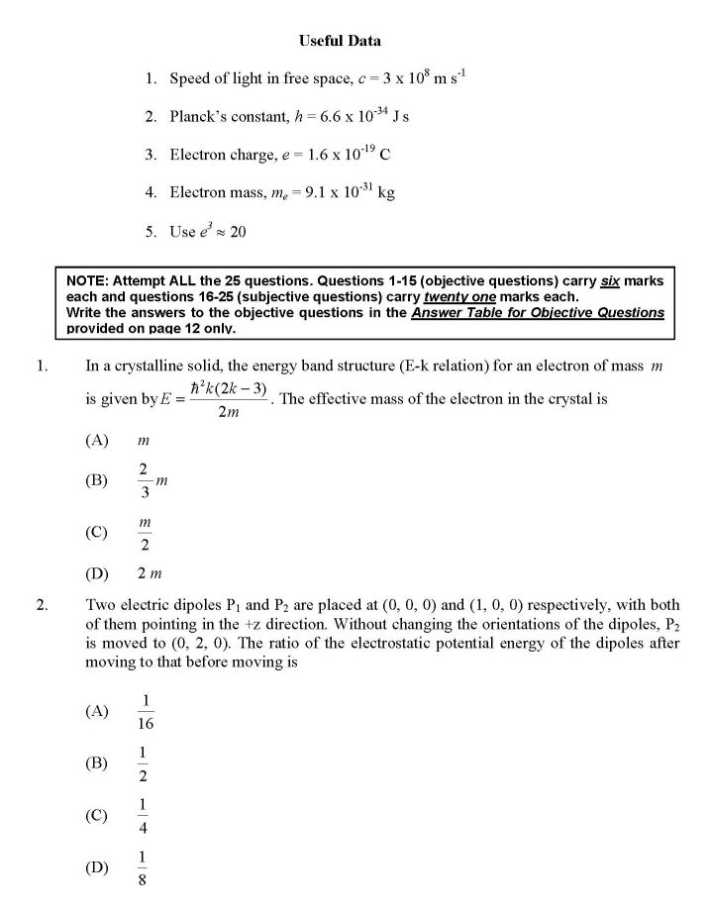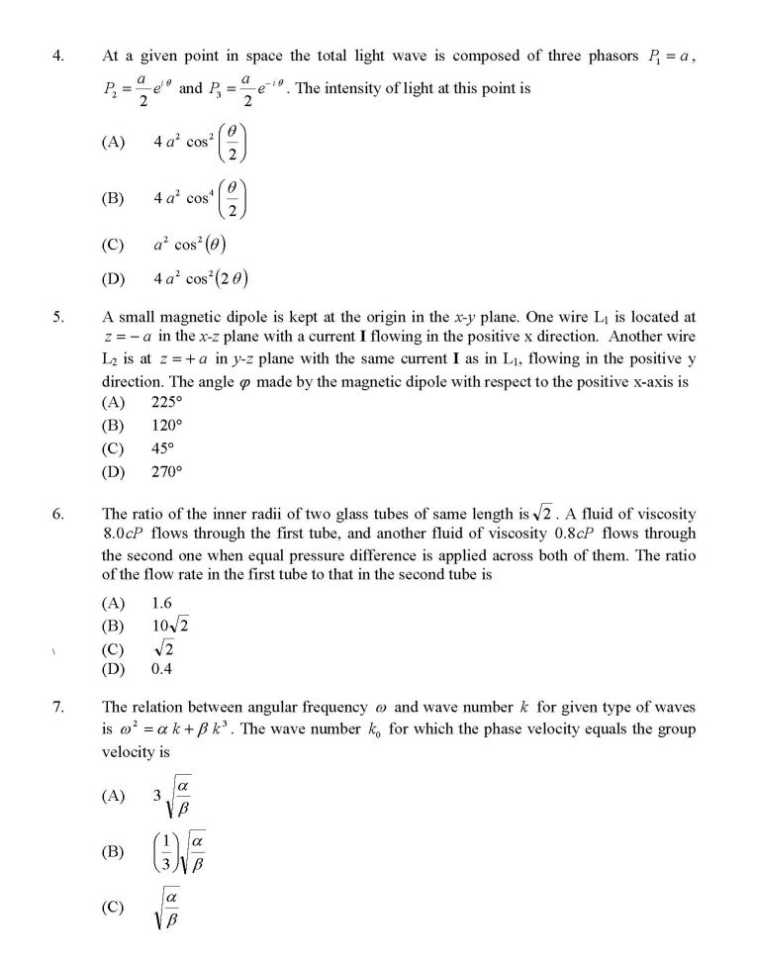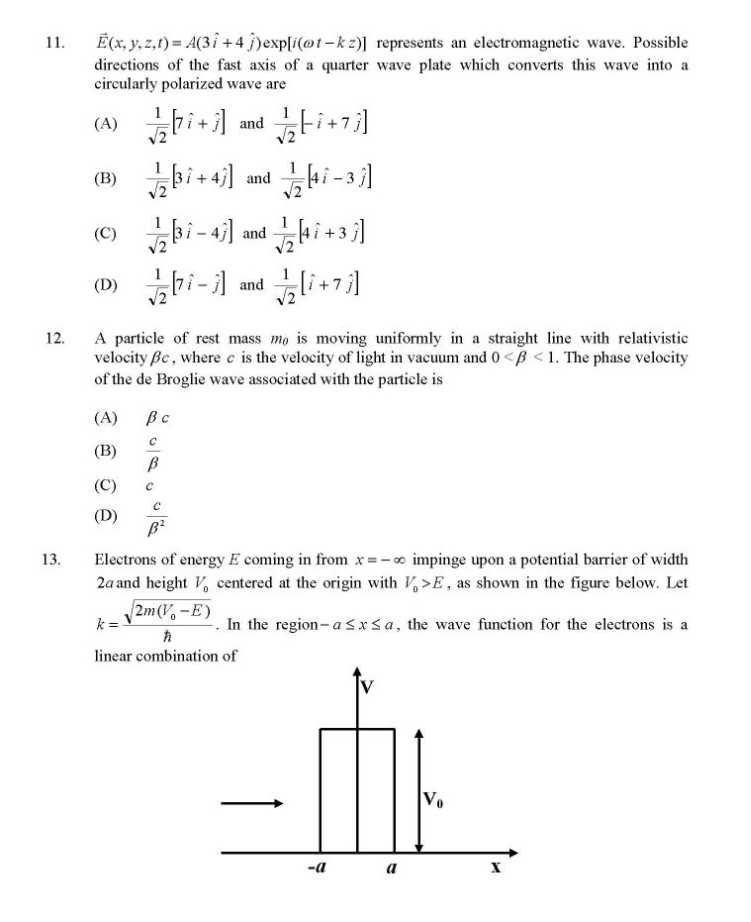|
#11
| |||
| |||
|
As you want question papers of IIT-JAM Physics Examination, so here I am providing following question paper: IIT-JAM Physics Question Paper Two electric dipoles P1 and P2 are placed at (0, 0, 0) and (1, 0, 0) respectively, with both of them pointing in the +z direction. Without changing the orientations of the dipoles, P2 is moved to (0, 2, 0). The ratio of the electrostatic potential energy of the dipoles after moving to that before moving is (A) 1\61 (B) 1/2 (C) 1/4 (D)1/8 A small magnetic dipole is kept at the origin in the x-y plane. One wire L1 is located at in the x-z plane with a current I flowing in the positive x direction. Another wire Laz−=2 is at in y-z plane with the same current I as in Laz+=1, flowing in the positive y direction. The angle ϕ made by the magnetic dipole with respect to the positive x-axis is (A) 225° (B) 120° (C) 45° (D) 270° In an intrinsic semiconductor, the free carrier concentration n (in cm-3) varies with temperature T (in Kelvin) as shown in the figure below. The band gap of the semiconductor is (use Boltzmann constant eV K510625.8−×=Bk-1) (A) 1.44 eV (B) 0.72 eV (C) 1.38 eV (D) 0.69 eV A particle of rest mass m0 is moving uniformly in a straight line with relativistic velocitycβ, where c is the velocity of light in vacuum and 0 <β < 1. The phase velocity of the de Broglie wave associated with the particle is (A) βc (B) c\β (C) c (D) 2β\c Consider a Body Centered Cubic (BCC) crystal with lattice constant ‘a’. Determine (a) the Miller indices for the (1, 0, 0) plane, (b) the number of atoms per unit area in the (1, 1, 1) plane. The spherical surface of a plano-convex lens of radius of curvature R = 1m is gently placed on a flat plate. The space between them is filled with a transparent liquid of refractive index 1.55. The refractive indices of the lens and the flat plate are 1.5 and 1.6 respectively. The radius of the sixteenth dark Newton’s ring in the reflected light of wavelength λ is found to be 5mm. (a) Determine the wavelength λ (in microns) of the light. (b) Now the transparent liquid is completely removed from the space between the lens and the flat plate. Find the radius (in mm) of the twentieth dark ring in the reflected light after this change. IIT-JAM Physics Question Paper     
__________________ Answered By StudyChaCha Member |